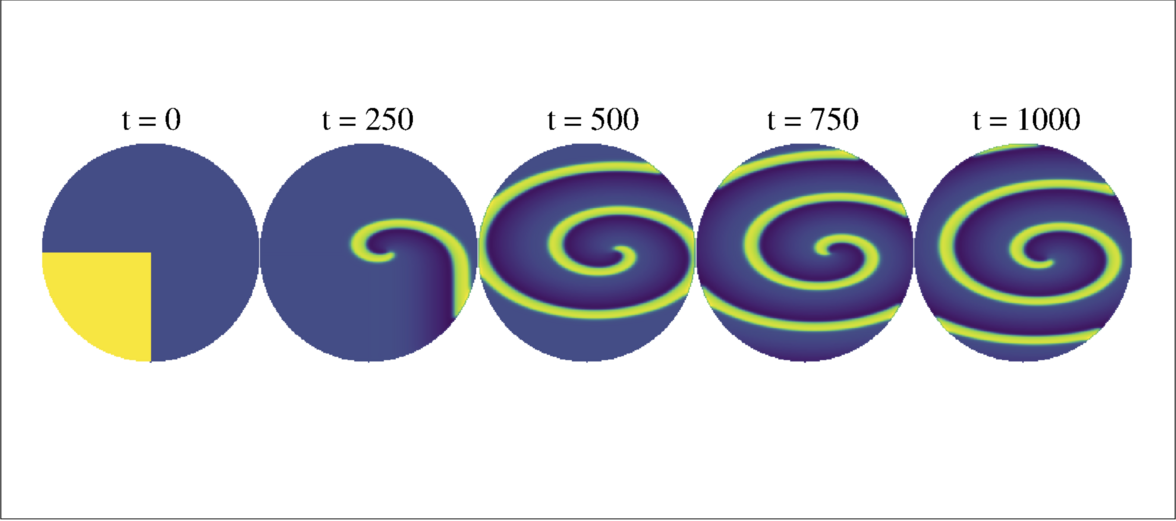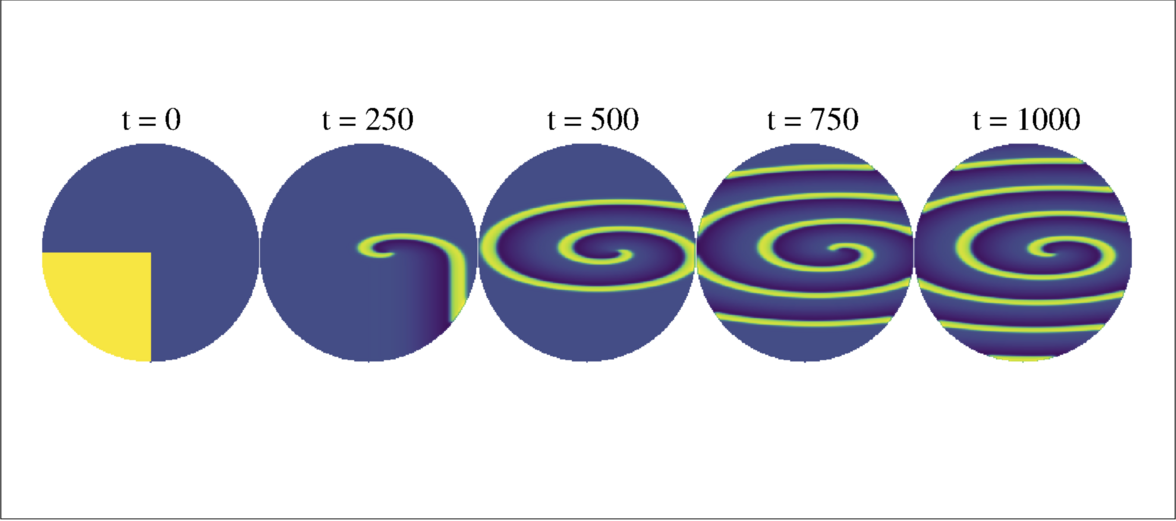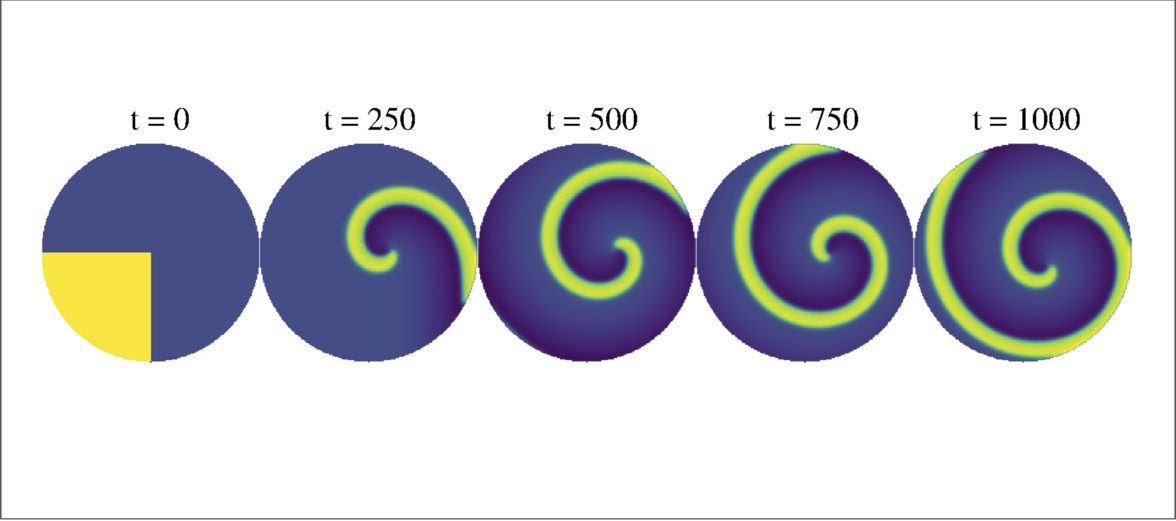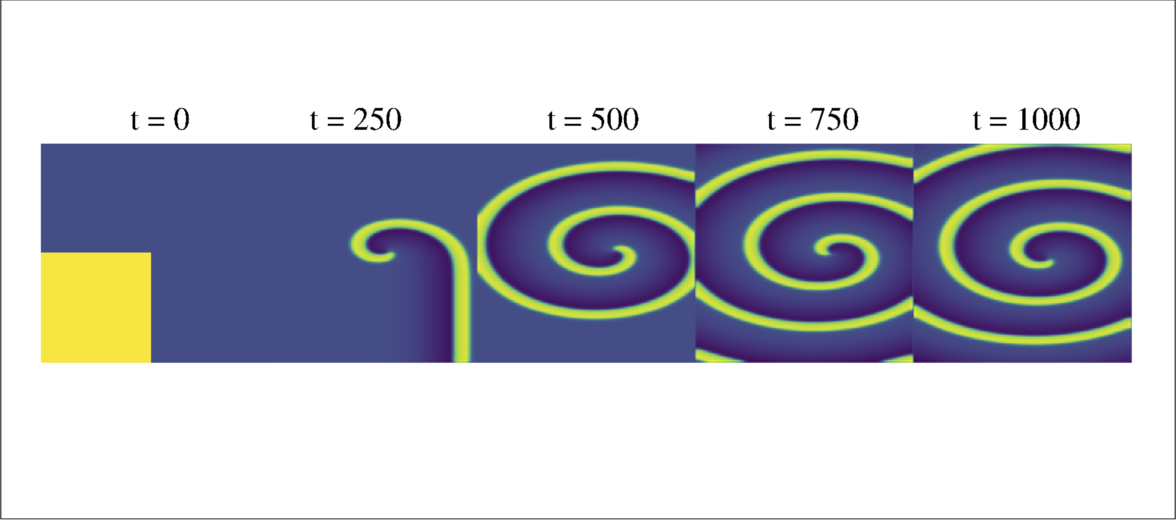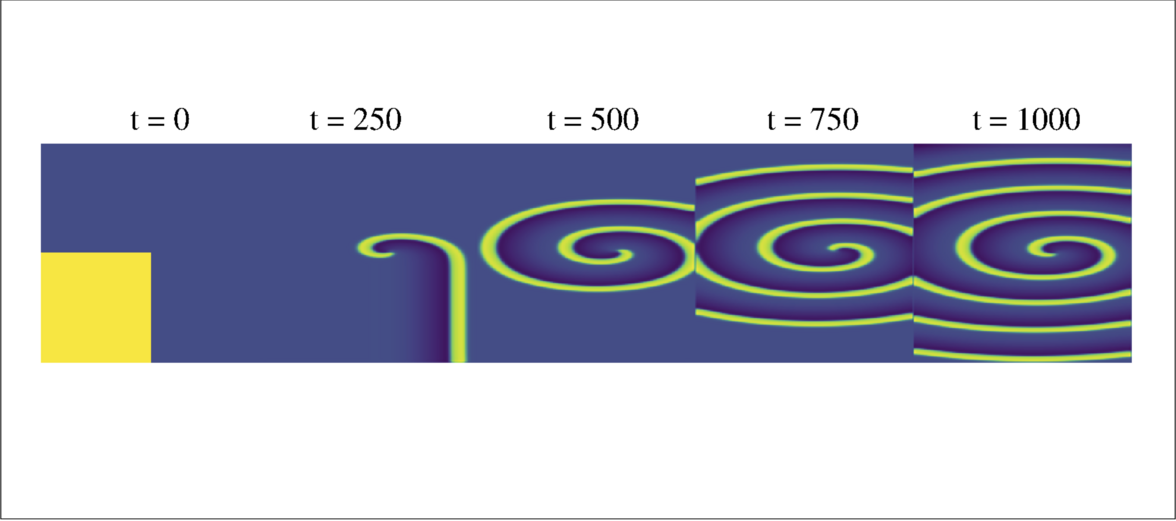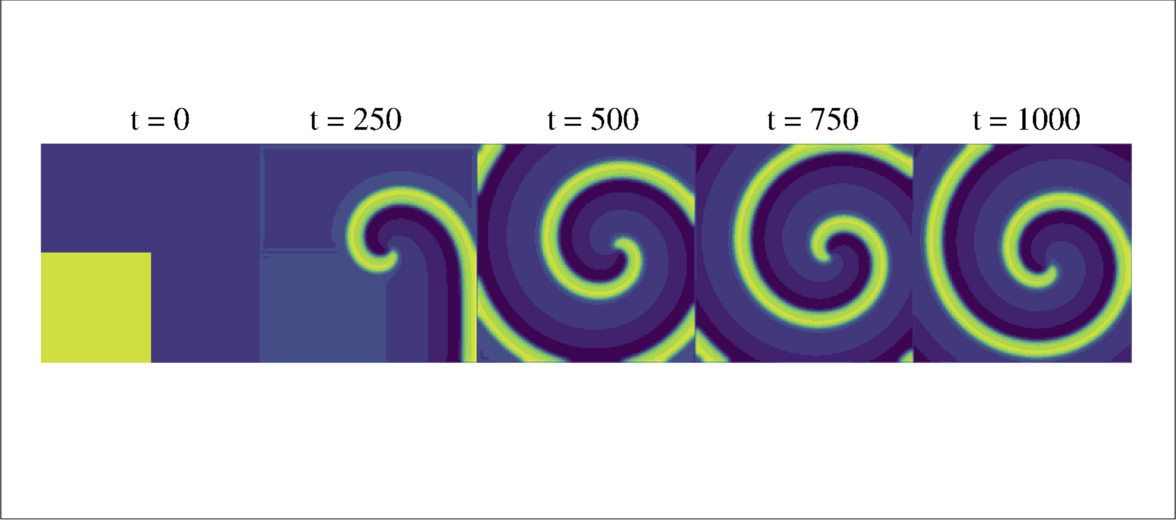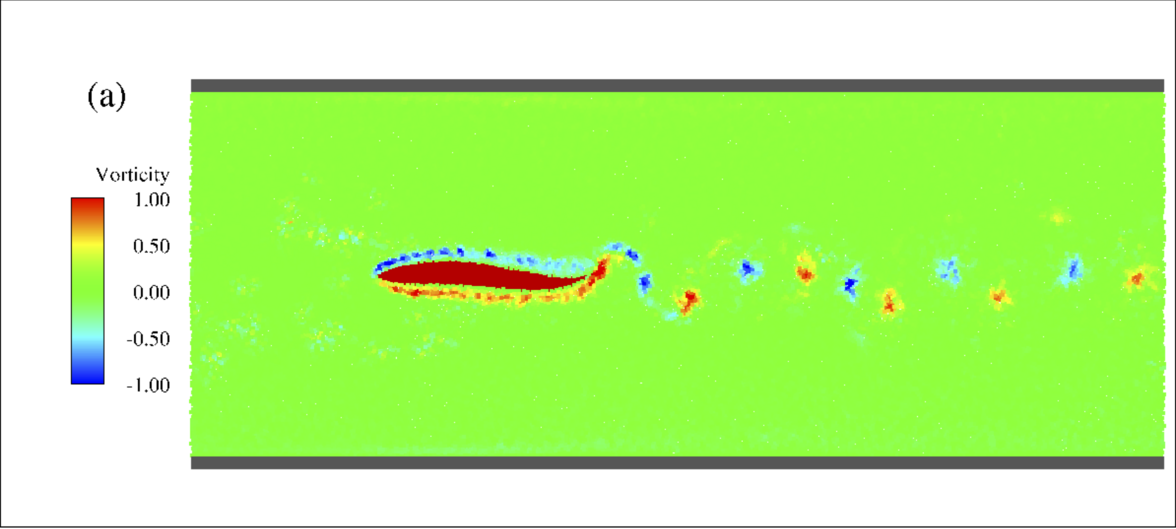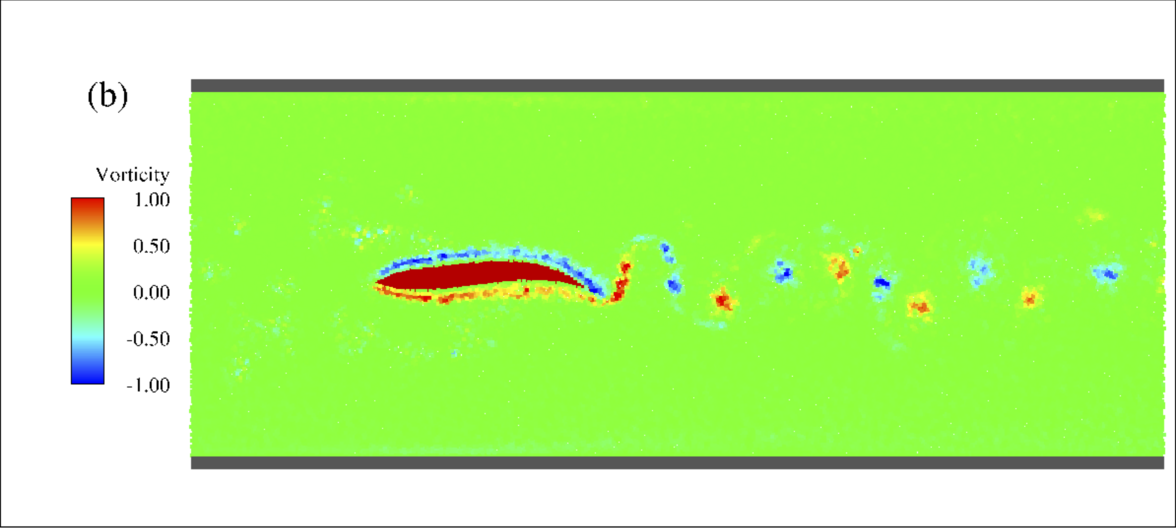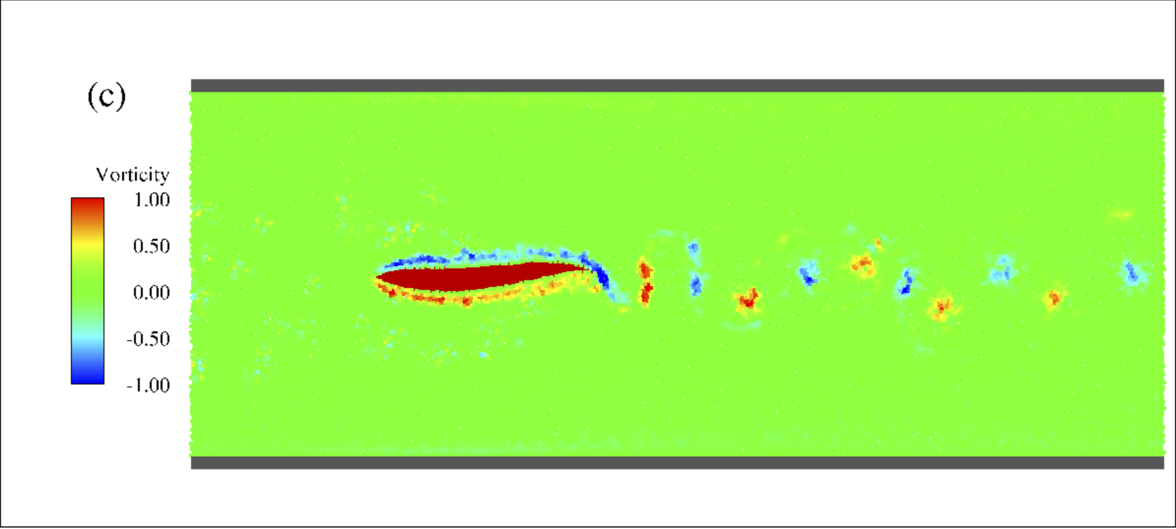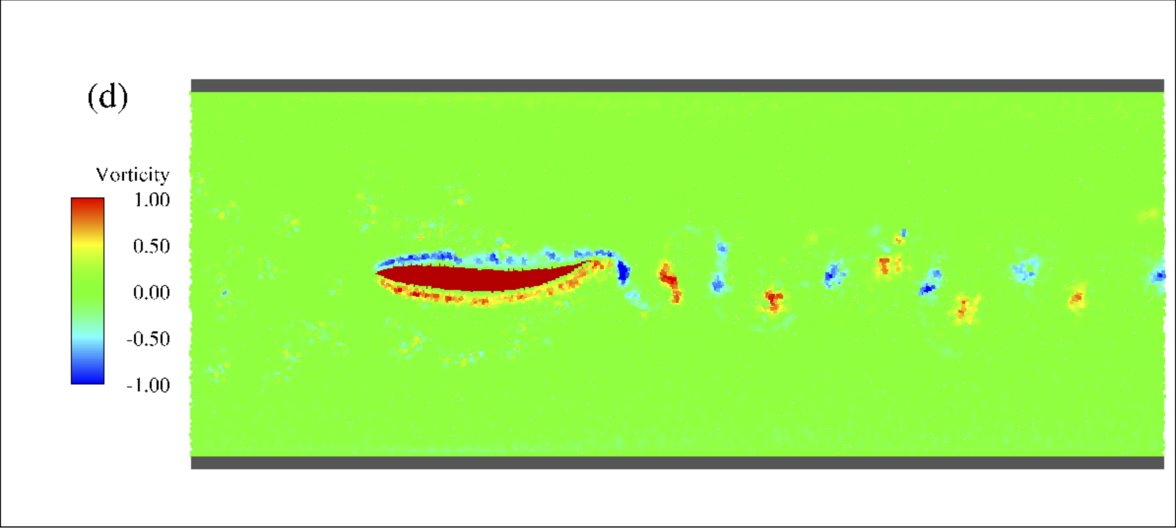The spiral waves consisting complicated patterns of the transmembrane potential
As a matter of fact, this complex potential fields, as those showing re-entrant spiral or scroll waves, may correspond to pathological diseases of the heart, e.g., cardiac arrhythmias can be related to the presence of wavefront spirals which lead to an irregular contraction of the cardiac muscle. Herein, we use our new proposed smoothed particle hydrodynamics for monodomain equation with FitzHugh-Nagumo model for producing the spiral waves.
Passive fish swimming
Passively flapping systems have been shown to share some essential features of the active swimming problems, including the fluid–flexible body interactions, leading to insights into how the flexibility of a fish affects the swimming efficiency. In this work, a complex passively flapping system, where a flexible fish-like body with a traveling wave motion interacts with the inflow, is studied by multi-resolution SPH method. Figure depicts snapshots of the flow field coloured by the vorticity and the configuration of the fish-like body. The four time frames approximately span a passive flapping period ((a) t = 48.8, (b) t = 49.3, (c) t = 49.6, (d) t = 49.9 ). As the passive flapping has reached a sustained stage, the distribution of vorticity forms a straight line behind the fish-like body and two single vortices are shed in each passive flapping period from the tail. Symmetric vortices are shed alternately from the flexible filament at the moment when it is most bent.
